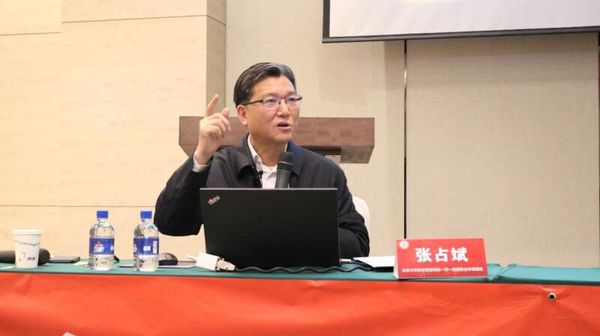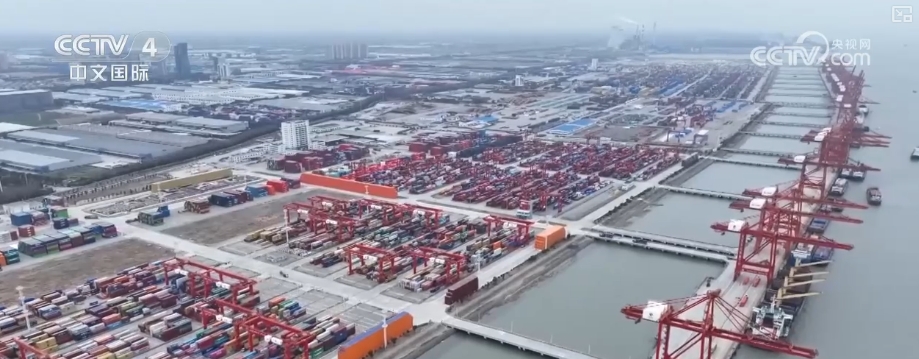Why Is Capital Pouring Into Xinjiang?
Why Is Capital Pouring Into Xinjiang?
Why capital is pouring into Xinjiang: A symphony of opportunities, strategies and development. In recent years, Xinjiang, as the bridgehead for China’s opening to the west, is attracting unprecedented capital attention. From large central enterprises to well-known private enterprises, from domestic financial capital to international investment perspectives
Why Capital Flows into Xinjiang: A Symphony of Opportunities, Strategies and Development

In recent years, Xinjiang, as the bridgehead for China's opening to the west, is attracting unprecedented capital attention. From large central enterprises to well-known private enterprises, from domestic financial capital to international investment perspectives, they all regard Xinjiang as a land with unlimited potential. This surge of capital is not accidental, but the inevitable result of the simultaneous resonance of multiple factors such as national strategy, location advantage, resource endowment and industrial upgrading.
1. Top-level design of national strategy and strong drive of policy dividends

Xinjiang's development has always been closely linked to national strategies. The core driving force comes from the further advancement of the “One Belt, One Road” initiative. Xinjiang has been identified as the "core area of the Silk Road Economic Belt". This strategic positioning has made it from the geographical edge in the past to the forefront of opening up to the outside world. The state has given unprecedented preference in policies, funds, and projects.
An epic leap in infrastructure: The state has invested heavily in building a three-dimensional transportation network in Xinjiang. The mileage of highways and railways has been significantly extended, especially the construction of the international dry port area centered on Urumqi and the assembly center of the "China-Europe Train", making Xinjiang the most convenient international logistics channel connecting inland China with Central Asia and Europe. Capital always flows to the place with the highest efficiency and lowest cost. This smooth "steel camel caravan" provides prerequisites for the implementation of trade and industry.
Policy depression effect: The central government has established two economic development zones in Xinjiang, Kashgar and Horgos, and has granted special tax preferential policies (such as "five exemptions and five half reductions"). This has provided enterprises, especially manufacturing and export processing enterprises, with huge cost advantages and directly formed a powerful "policy depression" effect, attracting enterprises to settle in the zones.
2. Irreplaceable location advantages and hub status for opening to the west

In the context of the reshaping of the global economic landscape, the Chinese market is increasingly closely connected with the markets of Central Asia, West Asia, and Europe. Xinjiang borders eight countries and has multiple national first-class ports. This unique location advantage is of great value in the new "dual circulation" development pattern.
A key node in the international corridor: Capital values Xinjiang as a hub connecting the domestic market of 1.4 billion people with the overseas market of billions of people. Investing and building a factory here can not only radiate the vast northwest domestic market, but also cover the entire countries along the Silk Road Economic Belt in a "front shop and back factory" style, with huge market potential.
The rise of trade and logistics centers: With the development of cross-border e-commerce and the improvement of trade facilitation, Urumqi International Dry Port Area, Kashgar and Horgos Port Area are growing into regional international trade and logistics centers. Capital is pouring into logistics, warehousing, supply chain finance and other fields, precisely because of its huge prospects as a "transit station" for trade between the Eurasian continent.
3. Transformation of resource endowments and construction of modern industrial system

Xinjiang is a well-known “treasure house of resources,” but the influx of capital is no longer limited to traditional resource extraction, but is moving towards the in-depth transformation of resources and the construction of a modern industrial system.
Energy strategy and green transformation: Xinjiang’s abundant coal, oil, and natural gas resources are an important cornerstone for ensuring national energy security. At the same time, its unique light and wind energy resources make it the most important new energy base in the country. A large amount of capital is pouring into the entire wind power and photovoltaic industry chain as well as supporting energy storage and UHV transmission projects. This is not only an economic investment, but also a response to the national "double carbon" strategy.
Layout of strategic emerging industries: Relying on low energy costs and unique mineral resources (such as silicon-based and aluminum-based), Xinjiang is vigorously developing new materials industries. In addition, modern agriculture, biomedicine, high-end equipment manufacturing and other industries are also attracting the attention of professional capital because of their unique advantages. Capital has seen the value-added dividends contained in the transformation process from "raw material exporting place" to "high-end manufacturing base".
4. Social stability and release of inherent potential

A sustained and stable social environment is the cornerstone for capital to dare to invest in the long term. The overall social harmony and stability in Xinjiang have created a good business environment for economic development. At the same time, Xinjiang itself is a consumer market full of potential. The increase in population, urbanization process and residents' income level means that the domestic demand market is constantly expanding, providing broad growth space for capital in consumer goods, service industries and other fields.

Summarize
The influx of capital into Xinjiang is a profound change of the times. It is not only a vivid reflection of the country’s grand narrative in regional development, but also a precise vote of market forces on strategic opportunities, comparative advantages and future potential. This is not just a simple flow of funds, but also a comprehensive input of talents, technology, and management concepts. It is foreseeable that as the construction of the core area of the Silk Road Economic Belt is deepened and consolidated, Xinjiang will gradually evolve from a "place of influx" of capital to a "place of creation" of value, drawing a magnificent new development picture on the economic map of China and the world.





